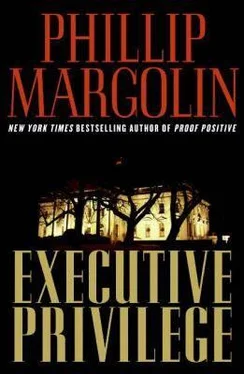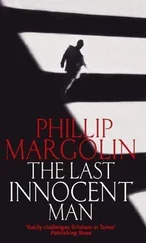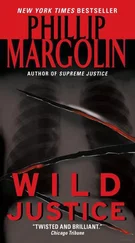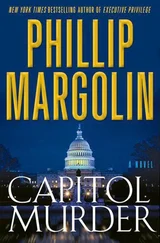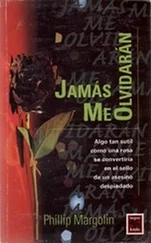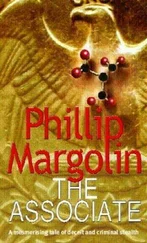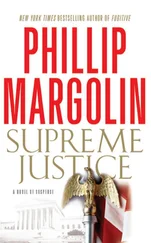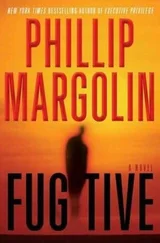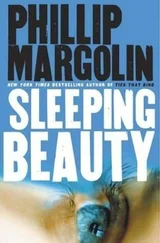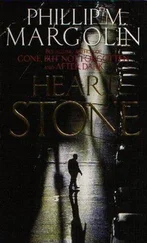“Thanks for taking the time to see us, Mr. Perry.”
The lawyer smiled. “When the receptionist told me who was in the waiting room I got curious. It’s not every day I get a visit from the FBI.”
Evans smiled back. “Let me put you at ease. We’re not here to arrest you. Your name popped up in an investigation, and we’re hoping you can help us.”
“I will if I’m able.”
“Thanks. Do you know a woman named Dana Cutler?” Evans asked.
Perry’s smile stayed on his lips but he shifted in his seat. “She’s a private investigator.”
“Does she work for your firm?”
“She’s not employed by Kendall, Barrett, but I have contracted with her on occasion when I needed help on a project.”
“Has she worked for any of the other partners?”
“I don’t know.”
Perry definitely looked uncomfortable.
“Doesn’t Kendall, Barrett have in-house investigators?” Maggie asked.
“We do.”
“Then why would you need Miss Cutler?”
Perry wasn’t smiling anymore. “If I answered that question I would have to violate the confidences of my clients. That would be unethical.”
“I can understand your concern,” Evans said, “but we’re worried about Miss Cutler. Her name came up in connection with a murder investigation. We tried to interview her, but she’s missing. We’re concerned for her safety.”
“Who was murdered?”
“A young woman named Charlotte Walsh. We have reason to believe that Miss Cutler was following her. Was she tailing Miss Walsh on your instructions?”
“I just explained that I can’t discuss the firm’s business.”
“Then she was working for the firm on this case?”
Perry looked annoyed. “I didn’t say that. I am forbidden by the rules of conduct that govern my profession to either confirm or deny any involvement Miss Cutler may or may not have had with this Walsh individual.”
“Would you be willing to tell me the last time you spoke to Miss Cutler?”
“No.”
“Don’t you want to help us find her? She may be in danger.”
“I’ll help any way I can as long as it doesn’t involve discussing the business of Kendall, Barrett. In my opinion, your inquiry is doing just that.”
Evans frowned. “How can the business of your firm possibly be affected by you telling me the last time you spoke to Dana Cutler?”
“Are you aware that I am a personal friend of the attorney general and the director of the FBI?”
“No, sir, I’m not.”
“I feel your questions are verging on harassment. I’ve taken time from my day to talk to you, but I am very busy and this interview is terminated.”
Evans stared directly at Perry for a moment. Then he stood up.
“Thank you for your time, sir.”
“I’m sorry I wasn’t able to provide more assistance.”
Evans smiled. “Don’t worry, sir. I thought this meeting was very informative.”
Perry must have pressed a button under his desk because Irene Miles opened the door and held it in a way that suggested she expected them to leave. Sparks and Evans didn’t say a word until they were standing at the elevator bank.
“I think we just got the bum’s rush,” Maggie said.
“That we did, but Perry told us more than he wanted to.”
“He’s worried about something.”
“That’s for certain, and it concerns Charlotte Walsh.”
Evans was about to follow up on his thought when his cell phone rang. He looked at the readout.
“We’ve got to go back to headquarters,” he said as soon as he broke the connection. “That was Kyle. They’ve figured out how to find the Ripper.”
Half an hour after leaving Dale Perry’s law office, Keith Evans walked into the conference room that had been assigned to the Ripper Task Force. The energy in the room would have run the lights in the city for a year. Everyone was in motion, talking excitedly on their phones, pacing with purpose, or energetically punching computer keys.
“What’s up, people?” Evans asked, and everyone started talking at once about polyvinyl siloxane, also known as PVS, the substance that had been found in the mouths of every Ripper victim with the exception of Charlotte Walsh.
“It’s the impression material a dentist uses when he’s going to have a crown or a bridge made for a patient,” explained Kyle Hernandez, a former soccer star at UCLA with a chemistry degree. “It’s soft when the dentist places it over a patient’s teeth. After it sets it’s removed from the mouth, and die stone, which is like a very hard plaster, is poured into the impression. Then the PVS, which is very elastic, is lifted off. The die stone model is scanned using a computer, and a robot mills the crown from porcelain or a technician makes a bridge or crown using a lost wax technique. We think we found minute traces of PVS in the victims’ mouths because someone used it for a model. When the PVS was removed from the mouth small traces remained.”
“How does this help us find the Ripper?” Evans asked.
“Dentists work closely with the technician who’s going to use the model. Sometimes they have the tech come to their office while the patient is there. Sometimes they’ll send a full-face photograph to the tech.”
“Do these technicians have access to personal information about the patient like an address or phone number?”
Hernandez grinned and nodded. “They could. Say they’re standing next to the dentist while they’re examining the patient and the patient’s file is sitting on a table. All the tech would have to do is take a peek. Or it could be something as simple as the dentist introducing the patient to the technician.”
Now Evans was as excited as everyone else. “Did all of the victims have dental appointments shortly before they were killed?”
“Bingo!” Hernandez answered as his grin widened. “But they all went to different dentists…”
“…who used the same lab,” Evans said, finishing the agent’s sentence with a flourish.
“Sally Braman is at the lab now talking with the owner, and Bob Conaway from the U.S. attorney’s office is ready to draft a search warrant application as soon as we give him an affidavit laying out probable cause.”
Evans smiled. “Good work people. Let’s hope this is the end of the line.”
“He’s two blocks away in a tan Toyota van, turning onto King Road…now,” the agent tailing Eric Loomis’s van reported.
Evans, Sparks, and two other agents were across the street from Loomis’s house in an unmarked car. A SWAT team was hiding behind Loomis’s detached garage and would seize him as soon as Evans told them Loomis was out of the van. He tried to calm down, but he felt like he’d been injected with methamphetamine. His hands were shaking, his palms were damp, and the way his heart was racing he was certain he’d flunk his yearly physical. He shut his eyes and pictured a clear mountain lake surrounded by green meadows and domed by a blue sky dotted with white, puffy clouds. The meditation technique failed miserably as soon as the agent tailing Loomis announced that the lab technician was turning onto Humboldt Street and would be pulling into his driveway momentarily.
Loomis’s house was a Dutch Colonial that had been built on a quarter-acre lot. There were two floors above ground and a basement, which was entered from a mudroom on the side of the house opposite the garage. A narrow alley separated the garage from the house. Doors on the side of the garage and the house opened into the alley. This meant that Loomis could park in the garage and carry his victims into the basement with little risk that he would be seen.
The van slowed down as it approached the house. Loomis used a remote to raise the garage door, and moments later he was inside.
Читать дальше
